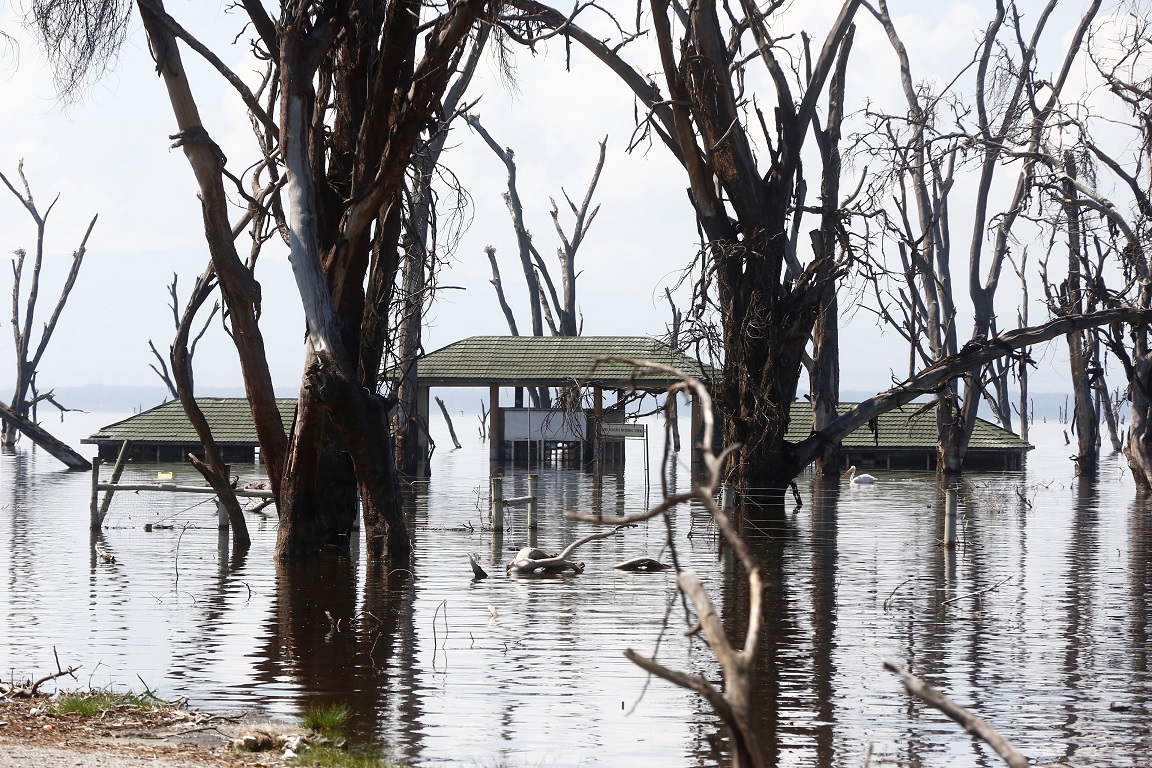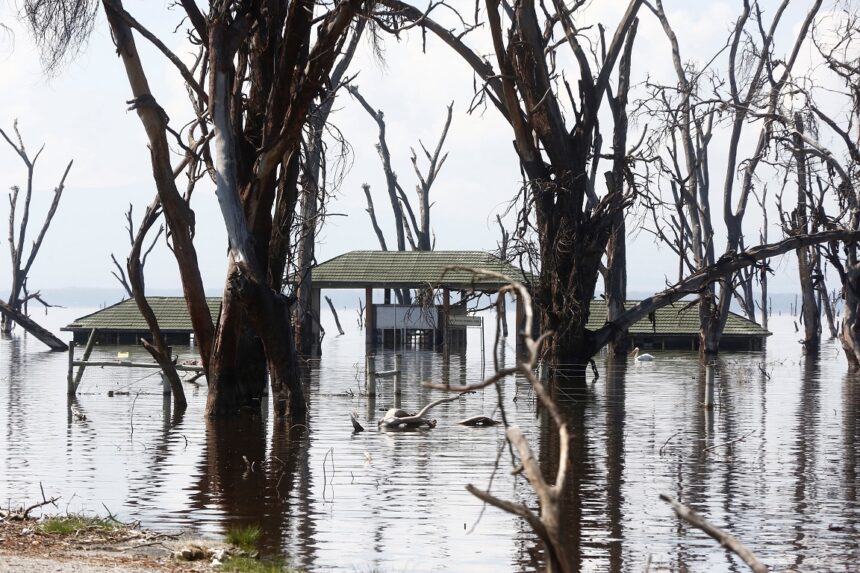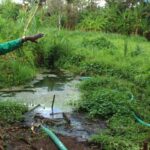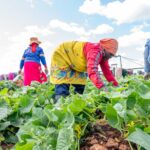By Loise Macharia

Kenya Wildlife Service (KWS) has diversified its tourism products at the world-famous Lake Nakuru National Park to include boating services and conference tourism.
The park’s Senior Warden, Edward Karanja said the diversification was to complement its traditional activities which are game safaris, pick-nick sites, camping and bird watching.
He said conferencing was a popular product under business tourism which came with the upgrading of Nakuru to city status in December last year.
Addressing journalist at the at the 188 square kilometer park during a media café’ on biodiversity organized by Media for Environment, Science, Health and Agriculture (Mesha), Karanja said the park was still accessible despite most of the routes having been submerged by the swelling lake.
He said KWS spent millions of shillings to create new routes to complete the circuit around the beautiful lake that has almost doubled its size over the past 10 years when it was 44 square kilometers to its current size of 80 square kilometers.
“More than 24 kilometers road network have been submerged since 2010 when the lake started swelling. The organization has invested large amounts of money to come up with alternative routes including cutting through a cliff to ensure tourists get value for their money,” he said.

Image: LOISE MACHARIA
The Senior Warden said KWS lost more than Sh400 million worth infrastructure to the welling lake after it submerged roads, power lines, offices, camping sites and staff quarters.
He maintained there was so much to see at Lake Nakuru which is among the largest revenue earners because the swelling lakes of the Great Rift Valley had caused a habitat modification bringing in new species of fresh water birds in search of fish.
“Lake Nakuru’s biodiversity is very rich, it is home to both salt and fresh water lake birds, however, there been an increase of fresh water bird species following the accidental introduction of fish into the lake in 2020,” he said.
Karanja said there was three new types of fish including the Nile Tilapia in the lake and a consequential increase of bird species from the initial 400 to about 450 currently.
He said the lake was home to millions of the lesser and larger flamingos but the numbers have since dwindled to about 6,000 due to a change in the water quality whose PH has dropped from 10.5 to nine.
The flamingo have concentrated themselves along the shores on the southern side of the lake where they were busy foraging and making nesting.
The scientists who accompanied the media team said it was not a rare thing to see flamingos making nest in Lake Nakuru although they breed in Lake Natron in Tanzania.
The park had been classified in different categories among the an Important Bird Area (IBA), a sanctuary for Rhinos and the Rothschild Giraffe, a World Heritage Site by the United Nations and Scientific Organisation (Unesco) and a Ramsar site.
It was recognized for having the largest euphorbia forest in the world until 2008 and 2007 when it was cleared by fire.
A senior Research Scientist at the Wildlife Research Training, Joseph Edebe explained that that the euphorbia forest was easily razed down and completely destroyed because the plants’ sap is highly flammable.
“There are plans to artificially regenerate the forest because natural regrowth may take time due to destruction by the wildlife,” he said.
Mesha Chief Executive Officer, Aghan Daniel said biodiversity was key to life and underlined the need for reporting issues around it.

Image: LOISE MACHARIA
“It means that we are losing vital information that the public needs to know If journalists are not going to cover biodiversity effectively, frequently and accurately,” he said.
He said the loss and damage is due to effects of Climate Change like the ones experience at the Lake Nakuru National Park which are some of the issues to be discussed at the Conference of Parties 2027 (COP27) slated in Egypt late this year.
He said the more than Sh400 million loss recorded at the park was just a tip of the iceberg as there were similar scenarios in many party of Kenya and Africa in general despite the continent having contributed the smallest share of greenhouse gas emissions at approximately 3.8 per cent.









